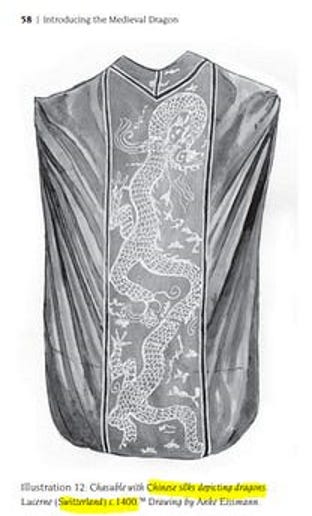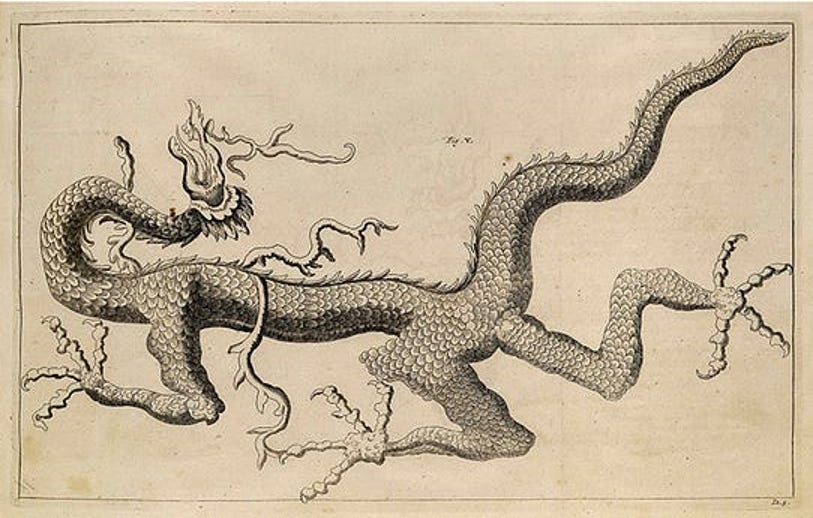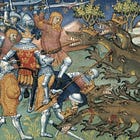Cross-Cultural Exchange
Pictured is a garment called a chasuble, donned by a priest. It comes from Lucerne, Switzerland, about 1400—but as you may be surprised to hear, the fabric with the dragon pattern on it actually originates from China.
This wasn't some obscure piece, either, Johann Jakob Scheuchzer's (1672-1733) Ouresiphoites Helveticus appears to include it when listing Alpine "dragons" (though I may be off on this one—do comment and let me know).
Besides wondering about the fascinating story behind how that even happened, there's are deeper reasons this is so striking.
In the Valentine's post for Livres des Merveilles I briefly touched on bestiaries and especially how elephants were used to represent Adam and Eve. In that post, the relationship between the elephant and the dragon was touched upon. You can probably guess that the dragon is meant to represent demons or even the devil/Satan.
This is corroborated outside bestiaries everywhere: in St George and the Dragon, the dragon's pestilence is the corrupting influence of sin; Satan turned into a dragon to try and eat Saint Margaret of Antioch; etc.
It is reductive to say dragon = demon but there is a strong correlation. And Lucerne did not lack for dragon mythology—the tatzelwurm is a fascinating and exemplary creature (a cat-dragon, also pictured), I hope to write about soon.
So what does this garment really tell us? Well it tells me that priests thought it was suitable to wear a garment wearing this fabulous design. It also tells me medieval Europeans were not guaranteed to think Chinese "dragons" were really like dragons at all.
And it is nigh impossible the Chinese artisan responsible was thinking dragon = demon; long were water/river spirits, besides the theological differences.
Maybe "dragon" as a taxon for historical study is flawed. Or at least we should be a lot more critical thinking with it. Why is that important? Well, that's a post for another day…
I do not own the images shared in this post.









